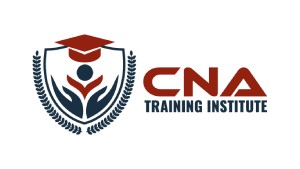It doesn’t take much. A slip on wet stairs. A seizure at a grocery store. A child choking in the middle of a school cafeteria. And there you are—not a paramedic, not a trauma doctor—just the person standing closest.
The moment’s already moving. Eyes are on you. Panic is whispering in your ear. And you’ve got two choices: freeze, or act. The first aid training dubai is what gives you the ability to act. Not perfectly. Not heroically. But effectively. With clarity, purpose, and enough knowledge to bridge the gap until the real sirens arrive.
What Certification Teaches You
First aid training isn’t about memorizing textbook terms or passing a multiple-choice quiz. It’s about learning what to do in the first five minutes—and doing it without waiting for permission.
Here’s what you walk away with:
- How to assess the scene without becoming part of the problem
- How to manage bleeding, broken bones, and burns in the moment
- How to handle shock, strokes, allergic reactions, and heart attacks
- How to keep someone breathing, conscious, and stable enough for handover
- How to use a defibrillator without fear of pressing the wrong button
You don’t need to know everything. You need to know what not to do, how to think under stress, and how to act like a barrier, not a bystander.
Certification Isn’t for Medics. It’s for Everyone.
That’s why a first aid training certificate dubai isn’t reserved for lifeguards or security staff. It’s for:
- Teachers
- Coaches
- Construction workers
- Office managers
- Store staff
- Freelancers working alone in co-working spaces
Online Is Easy. In-Person Is Real.
You can start online. Watch videos. Learn the basics. But if you want to walk away ready, go hands-on. Compressions don’t feel the same on paper. Tying a tourniquet looks easy until your hands are shaking. Rolling someone into the recovery position isn’t graceful, but you’ll never forget it once you’ve done it.
Look for certification from recognized organizations—Red Cross, St. John Ambulance, national health councils. Check that it includes CPR. AED use. Realistic scenarios. Not just passing a test, but building reflex. Because when the real thing happens, you won’t be reading from a manual. You’ll be relying on muscle memory, and the pressure won’t pause.
The Confidence You Didn’t Know You Needed
People notice. The way you move. The way you assess. The way you don’t panic when someone faints in line or cuts themselves open on broken glass. You become that person—the one people look at when something goes wrong.
Not because you’re fearless. But because you’re trained. And when it’s your kid, your coworker, your friend gasping for air or bleeding into their shirt, you won’t be the one screaming into your phone. You’ll be kneeling next to them, doing what has to be done.
Conclusion: You Might Never Use It—Until You Do
First aid certification isn’t about badges or bragging rights. It’s not about checking a box for your employer. It’s about being ready when life doesn’t give you a warning. You don’t get to schedule emergencies. But you can prepare for them.
One course. A few hours. A certificate that says you’ve seen what could go wrong—and you’re not willing to stand by and watch. That’s not training. That’s responsibility in motion.

